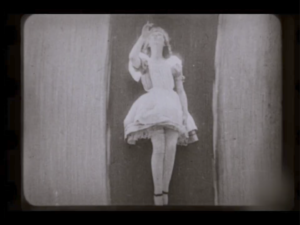 I am sitting at my kitchen island, my hands floating like two pale moths over two sheets of printing paper. Atop the sheets is a standard hospital logo printed in jeweled tones. On the first sheet falls clearly numbered post-surgical instructions, the phone number of a physician. On the second, there is a series of frames of what appears to be a strange and grotesquely beautiful flower.
I am sitting at my kitchen island, my hands floating like two pale moths over two sheets of printing paper. Atop the sheets is a standard hospital logo printed in jeweled tones. On the first sheet falls clearly numbered post-surgical instructions, the phone number of a physician. On the second, there is a series of frames of what appears to be a strange and grotesquely beautiful flower.
The flower bubbles and glistens and seems but one big encompassing petal, swirling it pinks and reds like two distinct acrylic paints against the pressure of a toothpick. Its tissues unfurl like a loose lapel in some frames, in others the flower scrunches into pronounced rings—its thin, lip-red veins splintering across, and always at the flower’s center there is a hole. Or, the hint of a hole—in that the flower bends and curves toward an unfixed point. A constant funneling to a seed or womb or hurt buried some place deep, kept in some far off place.
Frame by frame, the flower takes on otherwordly forms, and frame by frame, it adopts even stranger names: lower third of the esophagus, gastric antrum, gastric fundus, duodenal bulb.
On closer inspection, the names suggest that in actuality this is not a flower in various stages of bloom but a long and varied silken sock with different bends and constrictions that run through it—and through me. The long and changing parts of the sock sharing two commonalities: the slickness of the thing and its opening.
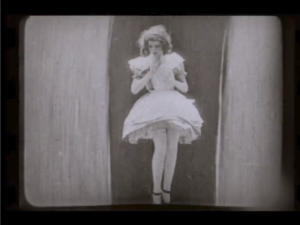
In the beginning of Alice in Wonderland, Alice chases the White Rabbit into a tunnel and tumbles down a very deep well. It is unclear how much time passes as Alice falls, but we know that either she falls very slowly or that the well is very long, or likely both, because on her way down, she has ample time to observe.
As she plummets, the shockingly sedate Alice takes in the walls of the well. She looks closely at the vessel of the space in which she is contained and what lines it: cupboards and bookshelves, maps and pictures. In the midst of her descent she greedily grabs at a jar labeled ‘Orange Marmalade’ only to find it empty. Out of fear of hurting someone below, she deposits the jar back into a passing cupboard and continues on. We are told “down, down, down she falls,” and as she falls, she begins to surmise that there is no real end—considers she may plunge like an arrow straight through the dark heart of the earth.
Her tone, however, is not fearful but rather excited—as is appropriate for a young girl on an unexpected adventure, and like all young girls falling midair, she begins to think lovingly of her cat Dinah and then— thinking happy thoughts and tired by the falling—she begins to doze. We learn she has only started her dreaming when she is suddenly—and at last—arrived.
A girl with flaxen hair in a flaxen dress parachuted into a heap of sticks and dry leaves. Initially crinkling with and through time, Alice now finds her journey end-stopped. The fall over. The hole from which she came presumably now closed.
*
Going “under” is a little like falling into a hole. At one time you are human—abundant and large. You can wiggle your colossal toes and shift your infinite weight. You can hear big noises and see the whole of the world and speak in a booming tone. But then you are asked to be ready to fall and told that, in falling, you will forget the falling to begin with.
Sometimes—before the dark appears, you are asked to turn onto your side. You are given oxygen and ad vised to bite down on a bit like a horse. You are told to breathe in then. Deeply. That the room is going to start to seem rather loud—as though it is closing in on your ears. That there may be a ringing sound in your mind and a burning through your veins.
Other times you are asked to lay supine and then to count backwards as if you’re about to plug your nose and plunge in a pool. You are told you may feel a little pressure at the skinned keyhole where your bird- like neck meets your ballooning chest. Then someone (you don’t know who) begins to prod with two fingers, and the room around you (with its metal and beeping and people) begins to bulge strangely and then to blur. You have forgotten you have legs, You can’t feel your arms. And, then—just before you start to cry in fear, the giant light becomes too much, swells itself into a pinprick of black.
*
On the trip home from my procedure, I pull from my purse a book, which sits astride the printed and neatly folded material I received from the hospital. The book’s cover, unlike the grotesque frame by frame of my digestive tract, is hauntingly beautiful. It shows two forlorn-looking starlets of another era. The man in the image is tuxedoed and holds the lissome woman, who lounges on his chest. Her hands are clasped behind her indolent yet perfectly coiffed head—her bob glimmering like moonshine, her focus on some- thing vague in the distance. The image is black and white except for the woman’s scaled dress, which exists as a sole pop of pink and works to emphasize the pink lettering of the title: The Beautiful and The Damned.
This last year I have been reading autotheory, essay, and memoir principally—for what I called “craft” purposes, but the week before I flew out to my appointment—my GI procedure, I felt tired of scanning mechanics, tired of the mercilessly ordered arrangements of words, but also, being someone in my chronically ill body, simply tired. And, so I turned to Fitzgerald—branded (for better or worse) by a more care-free decade—to find escape. Escape to a gravel-raked beach in the French Riviera. To a bustling midtown Manhattan. To wine dark nights and glasses bigger than finger bowls. To waltzes and banjos. To lilac organdy and graceless dancing and gray squirrel coats. To a time that is not my time and a place that is not my place and young, hard, beautiful bodies. Bodies that are anything but my own.
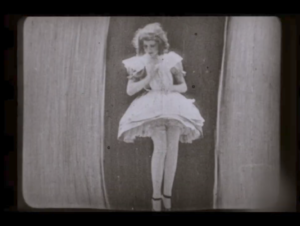
When I awake from my dreaming post-procedure, my partner T hands me the printed paper, the frame by frame of my ugly flower. My eyes loosely stumble over blocks of foreign-looking text, only to snag—and then in snagging, sharpen back into focus. My mind then catches up to my sight—my thoughts heeding pause.
Z-line irregular, 38 cm from the incisors. Biopsied.
I take the paper and begin to rub it through the wings of my palms. At first greedily then absently and then, with regained vigor. As if I could dust my cells out of existence. As if I rubbed hard enough, the changes in me would rub out and wouldn’t—couldn’t—be real. As if I was simply erasing the lettering on a marmalade jar and that the last seven years of illness was but the start a dozing, my own dreaming.
*
Seph Lawless is photographer famous for taking photos of abandonment. Condemned homes breaking open with blooms—their windows and doors spilling out green and petaled, their porches now a dais for the feral. Theme parks emptied of their children yet overgrown with brush—their water slides buried under the burnt orange of leaves and their oversized plaster whales left to mouth trees. And, then there are the midwestern malls gone bust. Ghost-like without people, the malls’ refuse—cardboard and plastic and all manners of debris—float like loose fronds on tiled ponds, the malls’ ceiling panels punched out at random to create toothless grins. Somehow sweet and yet oddly menacing.
In one photograph, captured in 2015, the heart of the abandoned Rolling Acres Mall in Akron, Ohio is pictured covered in inches of eerie white. It’s escalators, benches, trash cans, planters, and the planters’ surviving plants carpeted by a blue-tinged snow. Above a skylight once offering up the shadows of clouds to weekend shoppers had weakened to the point of puncture. Perhaps a tree branch after a storm or a heavy bird’s landing proved the last straw. Either way, the windowed roof that had provided light to so many was ripped into a rough hole, allowing something more frigid to fall through, for a type of haunting to rain itself down.
*
The points of my puncture, I think as I finger the 10 little welts that constellate my stomach: spotting visibly above my bikini line, near my naval, under my left rib cage. As I look in my bedroom’s mirror, my skin scrunches where one-time stitches rose up. My welts now dark and pinched oddly together. From some angles, mangled dumpling tops. From others, tiny pinpricks of black.
In the essay “Dirt and Desire: Essay on the Phenomenology of Female Pollution in Antiquity,” Anne Carson speaks to the long-standing portrayal of the feminine, of the female as transgressive. Abiding to no form, woman—through time—has been illustrated as spilling out and over the walls she is placed into, seeping out and into the things she is forbidden to trespass, try, touch. Carson writes, “In myth, woman’s boundaries are pliant, porous, mutable. Her power to control them is inadequate…”
*
The hole shown in the frame by frame—on the printed paper—is a long well that runs the length of me. It is a thing of myth and moonshine. In images, it glows wine dark but the glimmering rose is but a sleight of hand. Its deeps glitter yet grow graceless. Constricting and cramping. Swelling and slipping. Sinking and slowing, slowing, slowing. Only to sputter.
*
Z-line irregular, 38 cm from
I rub the wings of my palms.
I think: I can save the rusted cattail of the abandoned escalator. I think: I, too, can crystallize the air like a whisper.
I think: I’ve always known how to make fire in the blue tinge of snow.
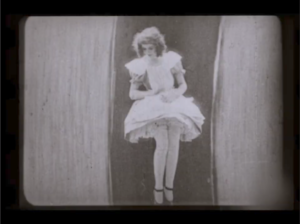
When my plane lands, I take to take to Google and learn the word “yawn” appears 19 times in The Beautiful and The Damned. Of course, the characters of vast fortunes and leisurely futures yawn—Anthony and Gloria and Dick and Maury, but so do other inanimate things. For one, cars open their mouths to let out gasps: “A thousands taxis yawn at a thousands corners,” “A cab yawned at the curb.” And, then there are the objects that, too, open wide. Or, at least one. When Anthony comes home to New York on Armistice Day, he finds his apartment emptied of his wife Gloria but filled with familiar items. Her own being illusive but recent presence lingering: a robin’s-egg blue dressing gown freshly discarded, a powder box left to its “yawning” on the bureau.
In the world of Anthony and Gloria, the yawn splits apart two thing—two lips, two lids, two sides—to create something more cavernous, but it also fills up space. The black vacuum of night becoming wild with sound—the city pouring back in. The yawn at once a thing that is empty and a quiet, a lull, a silence that promises—even assures—chaos.
*
Chaos: late 14c., "gaping void; empty, immeasurable space”; from the Prot-Indo-European root ghieh-,
"to yawn, gape, be wide open."
*
There is one known illness that can tear back open holes that had once been sewn up. Initially inflicting sailors, scurvy is largely a disease brought on by a severe Vitamin C deficiency. Sufferers of scurvy see their skin begin to crack and burst out into sores. They see their gums putrefy and turn as dark as tar. Even their bones blacken due to their muscles bleeding like oceans across a map. And, then, there is the re-breaking.
Vitamin C is vital in making collagen—the same collagen that helps you scab over when you skin your knee, that knits you back together in areas you’ve been cut into, drilled through, or torn apart. Take it away and your body fails to produce its natural adhesive—its all-important glue, and so bones that were once fractured or broken fall back into pieces. Past wounds, once closed, re-pierce and then unribbon. Hollows are re-hollowed, tears re-torn. The body comes apart but also is pulled back into a recession, like a bougainvillea sweeped away from a longstanding wall. What is left is unclear. They are holes—definitely, but they are also facsimiles of holes. The holes paining and painful are pain but also the memory of pain. An ache that is present and is past. A sting that is here and somehow bygone. A hurt and its forgetting.
*
I’ve been thinking about the hole inside me and how it is like Gloria’s powder box. Drowsy and languorous, the ring of muscle circling the lower part of my gullet opens again and again and again—against my insistence. It’s hand-carved lid nodding off, its mouth’s corner slack and drooping. Like from the valve of a lazy heart, I imagine talc powder and rouge leaking out and then out and then out again. Except its opening is more painful. Except there is always more pain.
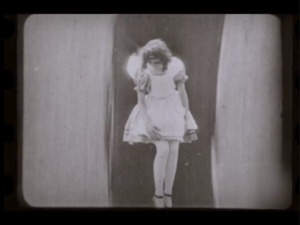
A friend writes me after my procedure—the procedure in which a bit is placed in my mouth like I am a rabid dog, the procedure in which the doctor finds remnants of soup dumplings and a pork bun from a half day before in my stomach, the procedure in which he biopsies strange-looking tissues, the procedure in which it is decided a balloon is to be blown up to stretch my tight-lipped stomach that continues to refuse food. It is after this procedure, my friend insinuates she has been saving this message for a day of good news, for when I felt “better.”
She tells me that I haven’t inquired after her for some time (though thankfully she has been well). That she feels that our relationship has become somewhat lopsided.
That I seem to be using her for medical advice, though she is sorry the medical world has failed me. That my texts have been increasingly urgent (read: bothersome).
But that she’d like to ‘save’ our friendship.
What my friend fails to recognize is that I’ve been writing these missives because I have been falling. Down and down and down.
Each text a grasp toward an empty jar of marmalade.
Each text papered snow thrown through a the rough scar in a roof.
Each text an arrow shot through the dark humus of the earth, seeking out any form of ground.
*
What my friend fails to ask: how long have I been left to hang desperately on her air.
*
The tools they used to try to close my hole (read: esophageal sphincter):
Minimally invasive frog legs. Laparoscopic spiraling blood like cloudful. Surgical instruments to puncture skin as wintering lily. A hook cautery catching a golden strand string instrument, the last memory in a glass bottle. A standard grasper to pull a blue heron through its feathered headdress. Left hand dissector for parting a fur coat from blue-deep music. A harmonic scalpel like time horizon attempting. Babcock clamp holding to the lapsed body of a snake, tugging at the shores of words left lapping. Prolene sutures hardening into an acreage of puddle as though it was only gaslit iridescence. As though and only.
Sutures like dark fen pine needles and then gel smudging hole slight. Hole like tired cast of a shadow. Hole like sticky tragedy stretching inward.
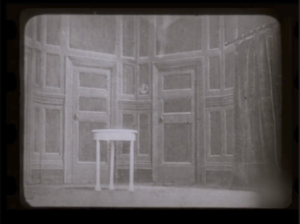
The tools I used to try to close my hole:
Joan. Clarice. Renata.
Glasses bigger than finger bowls.
*
It is said that Athena, the goddess of wisdom and war, went to Hephaestus, the god of fire and black- smiths, seeking new weaponry. So taken by her beauty, Hephaestus forced himself on Athena, raping her only to see his semen run sticky down her thigh. Quickly wiping it away with a woolen cloth, Athena threw the wool and its glistening to the earth. Upon touching the ground, however, the semen brought forth a child, Erichthonius. Seeing herself as his protector, Athena decided to keep watch over Erichthonius and so placed him in a secret, closed box—a box she gave the three daughters of Cecrops and told them never to open. One day while Athena was away, the three sisters—driven by intensifying curiosity—took their thick fingers and slipped them between the lid, teasing out the cloths that hid the child. What they found inside shocked and scared them. In some myths, the infant (Erichthonius) was found wrapped around a serpent, in others, he bore a snake’s tail. Driven mad by what they saw, it is said the sisters dove—one by one—off the acropolis to their death. Like bougainvillea being swept away from a wall. Like pain and the memory of pain, except more.
*
chaos
chasm
yawn
hiatus
gawp
gasp
gap
ghieh-
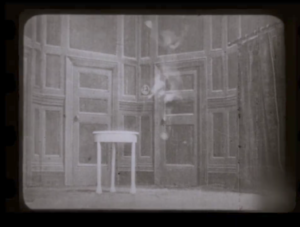
How they tried to close my hole:
A surgeon wrapped my fundus around my esophagus like a baby contorted around a serpent, or like the kingsnake I once saw eating a lizard. The snake's mouth looking like an open sore swallowing the face of a lover, the lover’s skin growing so very fair so close to death. I know that in the OR, the surgeon stitched a death mask like a paper white moon and the paper white puckered against an impossible thirst. A thirst for glasses bigger than finger bowls. A thirst for unboxing and uncloaking, trespassing, trying. For more and greater touch.
*
It didn’t work—the closing of my hole. I know this as fact. But, what I don’t know is if I have been hard at work filling it. And, if I have been working to fill it, what I have been filling it with. I know I have not been pouring in thick orange marmalade or freshly fallen snow. There are no vines growing over it, and no ferns or lilacs or dandelions springing from it as though from a windowed scar. And, there is definitely no light. Being poured in from above, or pouring itself out.
There is only the slickness of the thing and how is stretches inward, opening. The fact of my porousness and my inadequate control. The certainty of my fingers sticky from rubbing and rubbing—like silver ray- on making fire or a fevering wool that births a child. My hands and their giant moths.
There is only me—and what I can make of me.
*
What I can make of me:
Z-line
Zig-zag impression
Irregular pattern
Foci
Focal structure
Focal structural changes
Low-grade
High-grade
Intraepithelial
Neoplasia
Dysplasia
Mucosal carcinoma
Carcinoma
Lesion
Mass
Lump
Lump
Works Cited
Carroll, Lewis. Alice's Adventures in Wonderland. New York: Macmillan, 1920. Fitzgerald, F. Scott. The Beautiful and The Damned. New York, NY, Scribner, 2007.
Lamb, Jonathon. Scurvy: The Disease of Discovery. Princeton, NJ, Princeton University Press, 2016. Online Etymology Dictionary. Douglas Harper. 2001-2022.
Worrall, Simon. “A Nightmare Disease Haunted Ships During Age of Discovery.” National Geographic. 15 January 2017.
